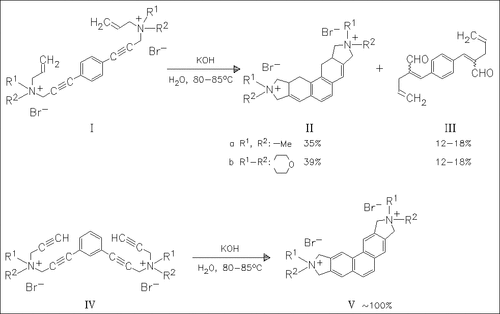ChemInform Abstract: Studies on Amines and Ammonium Compounds. Part 231. Behavior of p- and m-Bis(3-dialkylamino-1-propynyl)benzene Allylates and Propargylates in Aqueous Alkaline Medium.
Abstract
ChemInform is a weekly Abstracting Service, delivering concise information at a glance that was extracted from about 100 leading journals. To access a ChemInform Abstract of an article which was published elsewhere, please select a “Full Text” option. The original article is trackable via the “References” option.
ChemInform Abstract
The p-bis(dialkylaminopropynyl)benzenes (I) undergo double cyclization in alkaline solution to form the benzo[5,6:5′,6′-a,c]di(isoindolinium) salts (II) in moderate yields. The m-bispropynylbenzenes (IV) react similarly to give salts (V).





